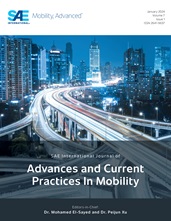Emissions of particulate matter, or PM, due to brake wear, are not well quantified in current air pollutant emission inventories. Current emission factor models need to be updated to reflect new technologies and materials and to incorporate the effects of changing driving habits and speeds. While emission regulations drive technical innovations that are significantly reducing PM emissions in vehicle exhaust, non-exhaust automotive emissions remain unregulated. Current emission factor models need to be updated to reflect the changes caused by new technologies, materials, and speed-dependent vehicle usage. Most research regarding brake emissions relies on a laboratory setting. Laboratory testing has allowed researchers, application engineers, data modeling engineers, and environmental agencies to generate large datasets for multiple vehicle configurations and friction couple designs. However, these results can be inconclusive or confusing to compare at best, due to the lack of a standardized method. This paper reports on a six-vehicle campaign conducted under standardized, repeatable, and reproducible conditions. By relying on state-of-the-art speed control systems, the inertia dynamometer can recreate specific driving profiles derived from field measurements. The study involved testing brake corners from six vehicles. The test plan included original equipment service parts, or OES, and aftermarket friction couples, or AM, on an enclosed brake inertia dynamometer. The individual friction couples include the friction material along with the commonly used mating disc or drum per the market survey performed early during the project. This approach reflects the OE brake configuration and subsequent brake replacement jobs. The test cycle used represents vehicle usage in California. The project relied upon approved testing protocols, test system validation, adjustment of cooling airspeeds, and interlaboratory evaluation for filter weighing methods. The results from more than 80 tests show the effects of axle position, friction couple formulation, as well as vehicle size, type, and speed. These results show substantial variation in brake PM emissions by vehicle application and friction couple type.
